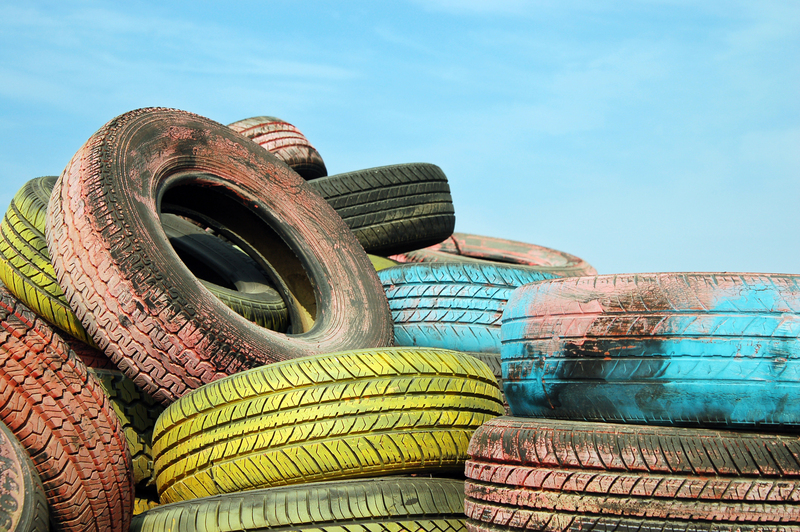Effective Methods for Proper PPE Waste Disposal
Personal Protective Equipment (PPE) has become an integral component in numerous industries and sectors, especially in healthcare, manufacturing, construction, and during times of public health crises like the COVID-19 pandemic. Although PPE such as masks, gloves, face shields, gowns, and goggles is essential for protecting individuals from various hazards, it presents a significant waste management challenge. Proper PPE waste disposal is critical to prevent pollution, the spread of contaminants, and ensure environmental safety.

Understanding PPE Waste: Types and Environmental Impact
Before delving into effective PPE waste disposal methods, it's important to comprehend the types of PPE waste and their associated risks. PPE is mainly made from plastics, polymers, and synthetic fibers, materials that are not easily biodegradable.
Common Types of PPE Waste
- Disposable Masks (surgical masks, N95 respirators)
- Gloves (latex, nitrile, vinyl, polyethylene)
- Gowns and Aprons (often made from polypropylene)
- Face Shields and Goggles (polycarbonate, PET)
- Boot Covers and Caps
Improper disposal of PPE waste can lead to environmental contamination, harm wildlife, and propagate infectious diseases. According to global studies, the volume of PPE litter surged during and after the pandemic, underlining the urgency for proper waste management systems.
Why Proper PPE Waste Disposal Matters
Improper handling and disposal of PPE waste can have dire repercussions:
- Infectious Risks: Used PPE may be contaminated with biological hazards, posing health risks to waste handlers and the general public.
- Environmental Impact: Most PPE contains plastics that can persist for decades, contribute to microplastic pollution, and contaminate water sources.
- Waste Management Infrastructure: Overloaded landfills and improper incineration practices can lead to further environmental and health hazards.
Implementing correct PPE waste disposal methods is essential for safeguarding human health and protecting ecosystems.
Best Practices for Proper PPE Waste Disposal
The following are comprehensive methods for PPE waste disposal, suitable for healthcare facilities, businesses, and households:
1. Segregation at Source
- Segregate PPE waste from general waste to minimize the risk of contamination and facilitate appropriate treatment.
- Utilize color-coded, labeled containers for PPE waste. In many regions, yellow bags are used for infectious medical waste, while regular waste is discarded in black or green bins.
- Train staff and individuals to ensure that only used PPE is placed in the designated bins.
2. Safe Containment and Storage
- Use leak-proof, puncture-resistant bags or containers to prevent leakage and exposure.
- Double-bagging is recommended for highly contaminated PPE, such as those used in infectious disease wards.
- Ensure containers are tightly sealed and clearly labeled "PPE Waste" or "Biohazard."
3. Timely Collection and Transportation
- Arrange frequent and scheduled pickups to avoid overflow and minimize the duration contaminated waste stays on site.
- Collection personnel should wear high-grade PPE and adhere to hygiene protocols.
4. Appropriate Treatment Methods
There are several PPE waste treatment technologies available:
- Incineration: One of the most common methods for infectious PPE waste disposal. High-temperature incinerators destroy pathogens and reduce waste volume but must adhere to environmental standards to control air pollutants.
- Autoclaving: This involves steam sterilization at high pressure and temperature. Autoclaving is ideal for decontaminating and reducing infectious load before landfilling or further processing.
- Chemical Disinfection: Some types of PPE waste, especially from healthcare facilities, can be safely disinfected using chlorine-based solutions or other medical-grade disinfectants.
- Microwave Treatment: An advanced method wherein microwaves are used to destroy pathogens and render waste safe for disposal.
5. Environmentally Friendly Disposal and Recycling
- Energy Recovery: Some facilities convert PPE waste into energy via waste-to-energy plants.
- Mechanical Recycling: Technologies are emerging for recycling certain PPE plastics, though this requires effective segregation and decontamination.
- Innovative Solutions: Companies are exploring ways to upcycle PPE into construction materials, road surfacing, or reusable products.
Specific Guidelines for Households and Non-professional Settings
Household or community-level PPE disposal presents its own set of challenges and solutions:
How to Safely Dispose of PPE at Home
- Do not recycle used masks, gloves, or other single-use PPE in conventional recycling bins. These could be contaminated and require different handling.
- Place used PPE in a separate bag, tie it securely, and dispose of it with regular waste unless local authorities have a dedicated collection system.
- Wash hands with soap and water or use hand sanitizer immediately after handling PPE waste.
- If you or anyone in the household is sick, double-bag PPE waste and keep it separate from other trash for at least 72 hours before disposal, as per many international public health recommendations.
Tips for Community PPE Waste Disposal
- Encourage the use of community PPE disposal bins in public spaces such as shopping centers, parks, and transportation hubs.
- Label bins clearly and regularly empty them to avoid overflow.
- Conduct awareness drives to educate citizens about the importance of proper PPE waste management.
Institutional and Healthcare Facility Best Practices
Staff Training and Awareness
- Regularly train hospital and facility staff about the protocols for handling PPE waste.
- Use posters, manuals, and digital media to reinforce best practices.
Compliance with Legislation and Guidelines
- Adhere to local, national, and international regulations regarding PPE waste disposal such as OSHA, CDC, WHO, and EPA guidelines.
- Maintain proper documentation and disposal records for audits and inspections.
Innovative Technologies and Future Perspectives
As the global challenge of PPE waste management mounts, research and innovation are leading the way towards sustainable solutions. Here are some emerging trends and technologies:
Emerging Technologies for PPE Waste Disposal
- Biodegradable PPE: The development of masks and gloves made from compostable materials to minimize environmental footprints.
- Pyrolysis and Advanced Thermal Technologies: These methods break down plastics at high temperatures, converting PPE waste into fuels and other usable products.
- Automated Waste Sorting: Robotics and AI improve segregation accuracy, making recycling and advanced treatment more effective.
- Mobile Decontamination Units: Portable autoclave or disinfection setups that can be deployed in rural or remote areas during health emergencies.
Public Awareness and Behavioral Change
- Collaboration between governments, non-profits, and the private sector to raise awareness about proper PPE disposal.
- Incentives for recycling and appropriate waste disposal behaviors.

Challenges and Barriers to Effective PPE Waste Management
Despite the availability of methods and technologies, several hurdles remain:
- Lack of Awareness: Many individuals are unaware of proper disposal practices.
- Infrastructure Gaps: Developing countries often lack adequate facilities for segregation and treatment.
- Regulatory Enforcement: Weak legislation or poor enforcement exacerbates improper disposal.
- Economic Constraints: Proper PPE waste management can be costly, especially for large organizations.
Overcoming these barriers will require coordinated efforts, investments, and education.
Conclusion: Building a Responsible PPE Waste Disposal Culture
The exponential rise in PPE waste has been one of the major environmental side effects of recent global crises. As PPE continues to play a protective role in society, implementing and promoting effective PPE waste disposal methods is no longer optional but a necessity.
By segregating, safely storing, transporting, and treating PPE waste, and embracing emerging technologies and responsible behaviors, communities and organizations can minimize health risks and environmental harm. Everyone -- from households to large healthcare institutions -- has a role to play in creating a safer, cleaner, and healthier future by committing to proper PPE waste management. Consistent education, investment, and policy support will ensure that PPE protects not just individuals, but the planet as a whole.
Key Takeaways for Efficient PPE Waste Disposal
- Segregate PPE waste at source using marked containers
- Use correct treatment (incineration, autoclaving, chemical disinfection, recycling)
- Train individuals and staff in waste handling protocols
- Work within local regulations and support innovative, eco-friendly solutions
- Promote responsible disposal habits in the community
Proper PPE waste disposal is a shared responsibility -- let's ensure our practices today lay the foundation for a sustainable tomorrow!